Drop the Bypass Rally in Stonington Connecticut
Despite bone chilling cold and wet and some roads still covered from an overnight snow, a crowd of well over 100 gathered in the path of the proposed rail bypass […]

Despite bone chilling cold and wet and some roads still covered from an overnight snow, a crowd of well over 100 gathered in the path of the proposed rail bypass […]

Julie Carroccia spoke on behalf of Charlestown at the Rally against the Bypass held in Mystic Connecticut on February 11, 2017. Other speakers were US Senator Richard Blumenthal, Loren Spears […]

It is crucial not to let the proposed Bypass go to Tier 2. By stopping it now, you will: Ensure fast rail service to Providence; Create jobs now; Save Money; Save time and avoid costly lawsuits; Save farms and open space; Join with colleagues in the State of CT …
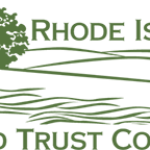
The state of Rhode Island, municipalities, foundations, non-profit organizations and the federal government have made considerable investments to protect these preserves and other properties in Rhode Island’s communities for their natural resource (including habitat for rare and endangered species, watershed and water quality protection), cultural, and public recreational values. These investments were NOT made with the intention of creating a “land bank” that could be used as the “path of least resistance” for new transportation infrastructure such as the proposed new rail corridor being considered for the bypass.
You can learn more about the Rhode Island Land Trust Council at their website.

Though I fully support the critical aspects of the NEC FUTURE Tier 1 Final EIS referenced above, I do not support the Rhode Island portion of the Old Saybrook-Kenyon Bypass as it is currently proposed.
The route the Bypass takes in Rhode Island cuts through environmentally sensitive conservation land, drinking water resources, Narragansett Indian tribal land, family farms, and historic districts. I encourage FRA to move any decisions on realignment through this segment of Rhode Island into a Tier 2 process, which will allow for a more complete evaluation of these environmental and community concerns.
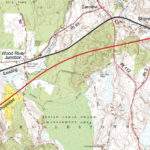
Because of the many and extreme negative environmental and cultural impacts that would be caused by the new rail segment known as the “Old Saybrook to Kenyon Bypass” we ask that the Bypass be removed from the plan before the Record of Decision. Supporting the removal of the Bypass doesn’t mean we are against improving high-speed rail. The Acela is already traveling around 100 miles per hour in Charlestown. Keeping the train in its current alignment would save over a billion dollars in Charlestown alone. With a more practical vision we could get investment in rail in the right places and in the right way and we could get it a lot sooner without sacrificing Narragansett Tribal land, public parklands, protected open space, wetlands, tourism assets, active farms, historic mill villages, and private homes.
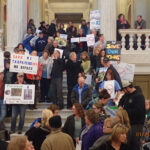
This video is from the January 25, 2017 Rally at the Rhode Island State House to Drop the “Old Saybrook to Kenyon Bypass” from the Federal Railroad Administration Tier 1 […]

I have personally heard from hundreds of constituents who oppose the proposed realignment in Washington County, and I want them to know that I have heard their concerns and I support their community,” said Langevin. “I am a strong proponent of high-speed rail, but I believe there must be a solution that modernizes intercity passenger rail in Rhode Island without disturbing ecosystems, impinging on property rights, and threatening the natural beauty of Charlestown and surrounding areas.

Shortly before the State House Rally to protect and support our parks and hiking trails, Narragansett Tribal land, historic neighborhoods, active farms, wetlands, homes, and more, Charlestown Town Council President […]
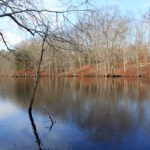
The Federal Railroad Administration’s new rail line proposal known as the “Old Saybrook to Kenyon Bypass” would bisect The Nature Conservancy’s 1,112 acre Carter Preserve and leave half of its […]
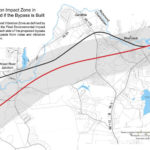
Maps, photos, and descriptive text by Cliff Vanover. Information in this post from NEC Future Tier 1 Final EIS – Chapter 7.12 Noise and Vibration. The Federal Railroad Administration (FRA) […]
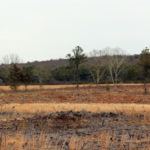
Going to the January 25 4:30 pm State House Rally against the Bypass and for all the wonderful things we might lose?
You can bring signs that state your objection to the Bypass, but please note that Capitol Police do not allow any handles on the placards, so they should be sturdy enough to hold up and not flex too much.
Need ideas for signs? Here are some slogans that have been proposed.

Really?! Missing from the Westerly Sun’s Monday, Jan. 16, “Highs and Lows” was any mention of a meeting in Charlestown that was attended by well over 400 people!
I urge the editor to give “Highs and Lows” ink to the hearing that brought overwhelming opposition to the proposed new tracks through Charlestown. I also urge your readers to look closely at the issue and to email their comments to the Federal Railroad Administration at amtrak-comments@charlestownri.org by the Tuesday, Jan. 31, deadline. Anyone, not just someone from Charlestown, can send a comment to the Federal Railroad Administration at this address.

What: Attend a Rally to protect and support our Parks and Hiking Trails, Narragansett Tribal land, Historic Neighborhoods, Active Farms, your home, and more
Where: Inside the Rotunda of the State House in Providence
When: 4:30 p.m. on Wednesday, January 25
How: Get on the bus with us! – Meet at Charlestown Town hall at 2:00 p.m.
RSVP: Please read the whole post, you have to reserve a seat on bus. Even if you drive yourself, there are rules for signs at statehouse, and more in this post that you will need to know.
Yes: It’s more important to attend the Rally than traveling to Springfield for FRA “open house”!

Note from CCA: This Press Release from Senator Reed’s Office does not give a specific date for the extension except it would be at “least several weeks”. That would put […]

On Wednesday, Charlestown Council President Virginia Lee and Vice President Julie Carroccia along with Westerly Town Council President Jamie Silvestri and Westerly Councilman Jean Gagnier led a delegation of Charlestown and Westerly residents representing some of the groups impacted by the Federal Railroad Administration (FRA) plan to a meeting at the State House.
The delegation’s goal was to bring these deficiencies to the attention of the Governor so that she could be fully aware of the negative impacts in Charlestown and nearby Westerly and Richmond. Keeping the high speed rail in the current right of way will avoid all of these impacts, save the state of Rhode Island millions of taxpayer dollars and still allow for modern high speed rail transportation to link Providence to Boston and New York.
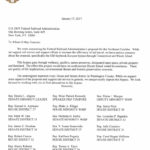
Every State Senator and State Representative that represent the towns of Washington County have signed a letter in opposition to the “Old Saybrook to Kenyon Bypass”. The letter was sent to our Congressional Delegation and Governor. They have sent a similar letter to the Federal Railroad Administration. We are most grateful to all our South County Legislators for their support in removing the “Bypass” from the FRA’s long term planning. Thank you!!
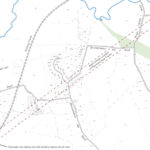
The Federal Railroad Administration claims in their Tier 1 Final EIS that from Washington DC to Boston they do not impact any tribal land. In Charlestown however, the proposed new […]
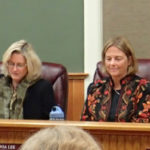
Charlestown Town Council President and Vice President Press Release Officials and volunteers from the Town of Charlestown held a constructive conference call with the Federal Railroad Administration (FRA), Friday, January […]
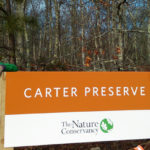
“This has been one of my family’s favorite hiking spots for the last 20 years or more. I’ve grown up in those woods, on these trails and can’t imagine my life without them. Not only has it been educational learning about the ecosystem and wildlife that resides there but it’s a place of tranquility. To say that I’m opposed to the proposal set forth by the Federal Railroad Administration is an understatement.”

Bypass would destroy the bucolic Burdickville village, demolish the historic districts of Columbia Heights and Kenyon, ruin the productive fourth-generation Stoney Hill Farm, divide The Nature Conservancy’s treasured 1100-acre Carter Preserve, demolish the preserved Revolutionary-era Amos Green Farm, and invade other protected conservation lands, all to enable long-distance passengers to traverse our town a minute faster than current rail transport allows. The inestimable and irreversible environmental costs to our town for that minute saved (to do what?) are staggering.

“In doing so it bisects the Frances C. Carter Memorial Reserve. This reserve was completely overlooked in the EIS analysis. The straightening also manages to cut through the Amos Green Farm and the Stoney Hill Cattle Co, which is a 4th Generation Family Farm. It also fills in wetlands at the Burlingame Wild Life Preserve and the Great Swamp Management Area in Kingston. Because the trains already travel at high speeds, it is difficult to see why this expenditure is needed. And the few seconds (if any gained) hardly justify the economic and environmental damage done by rerouting the tracks.”
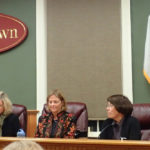
On Tuesday, January 10, after listening to testimony from many of the more than 500 citizens who had gathered to protest the proposal for construction of new rail lines through […]
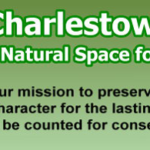
We are here to defend the natural and human resources that this proposal destroys. This preferred route includes the degradation of homes, farms, our watershed and conserved lands of the Nature Conservancy, local Land Trusts, RIDEM, Tribal and municipalities. We have a legal obligation to object to the sale, degradation or taking of these lands. There are legally binding conservation easements and management plans attached to conserved properties, with the intent of preservation in perpetuity. Perpetuity meaning forever, protected on the basis of common trust and not to be violated.
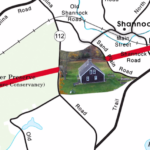
This short film was created by Carla Ricci, owner of the Amos Greene Farm. The historic Amos Greene Farm is one of the many farms or parklands protected by conservation easements along the path of the proposed train route through Westerly, Charlestown and Richmond. Those easements protect the land from a change of use by future owners, developers, and state and local government. Will they be strong enough to stand up to the state of Rhode Island if the Federal Government is their partner? Where the state holds the easement, they have a legal obligation to enforce the easement – even enforce it against another state agency. Contracts are not always followed, especially when no one is watching, but we are watching and ready to fight!
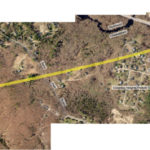
We begin at the border of Richmond, heading west southwest towards NYC on the proposed bypass route. As noted in the recent post about the impact of the bypass on the village of Kenyon, at the border of Charlestown and Richmond the tracks would be carried aloft on a nearly 1/2 mile bridge roughly 25 or 30 vertical feet above the Pawcatuck River, wetlands and floodplain, and more importantly, high enough above the existing tracks to allow trains below to pass, since the existing tracks would still be used were the bypass built.

This video follows the path of a proposed new pair of train tracks through Charlestown. The existing tracks will remain for freight and slower trains. The new tracks are for […]
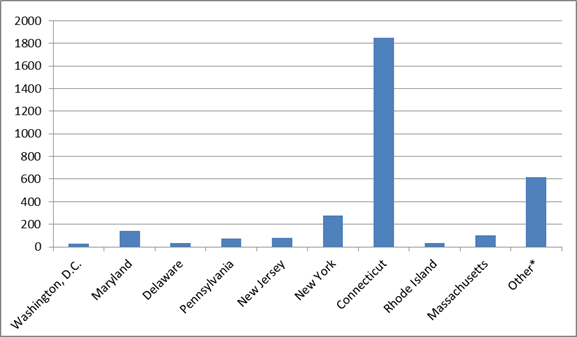
The EIS, planning, and preliminary engineering etc., is prepared by Parsons Brinkerhoff/AECOM Joint Venture. It’s reported that $40 million has been spent so far on this planning process. How hard would it be to spend a few more pennies to write a letter stating that the plan includes “new rails and a new rail route in your community”. Or better yet, why not have included the towns in the scoping process from the very beginning?
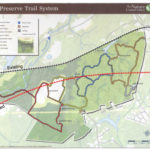
Since the mid 20th century, when many railroad companies went bankrupt and abandoned miles of rail beds, an effort has been underway to turn their defunct rights-of-way into parkland for bicyclers and walkers, popularly called “Rails to Trails.”
Under the Federal Railroad Administration’s (FRA) proposal in Charlestown, the existing rail lines will not be converted to trails, they will remain to be used for rolling freight and slower trains. Charlestown would end up with four rails, the existing rail lines that run from Kenyon, through Shannock, Carolina, and Wood River Junction, and two new high speed rails running through over 2000 acres of parkland, including the 1,112 acre Francis Carter Preserve.
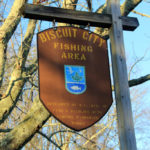
They express a “Don’t worry, relax” attitude, which is hardly reassuring because an examination of the proposed bypass, especially in Richmond where it begins, clearly shows the route has been carefully sited to take into account the existing topography of the land, as well as the many buildings, other structures and roads in the way of the proposed bypass. So moving this section is probably not an option. The designers and engineers have chosen the best possible route, for them, but not for those who live close by.